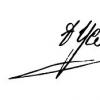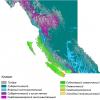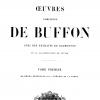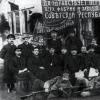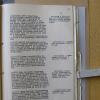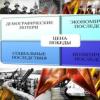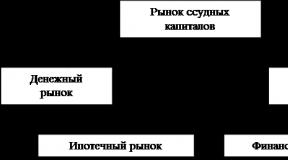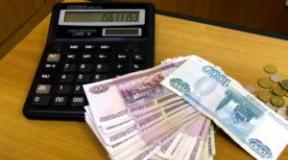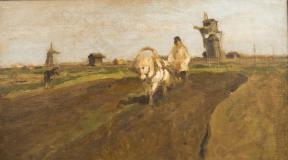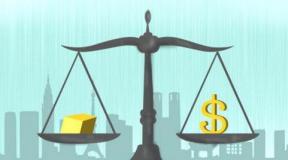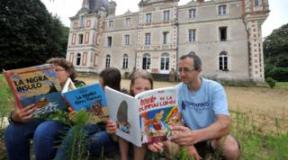The child cannot combine letters into syllables. How to explain to a child how to combine two letters into a syllable? How to make your child's education more productive
When the baby confidently distinguishes the letters of the alphabet, you can start reading syllable by syllable. Connecting letters into syllables is easy for an adult, but a child may experience some difficulties at first.
Many parents complicate things when they first teach their child to read letters (“Be”, “eN”), and not sounds (“B”, “N”). Such "official" names confuse the baby, as a result, instead of the word "MAMA" you get "eMAeMa", etc.

How to teach a child syllables
1. Before you start learning syllables, make sure your baby knows at least part of the alphabet. The first words usually consist of open vowels (such as A, O, U, Y, E) and voiced consonants (such as L, M, H, P, etc.)
2. Teach your child syllables in game form: ask to imagine that one letter runs to another, so they are pronounced inseparably. For example, in the sound combination "MA" the letter "M" tends to "A". Pronounce the syllable slowly and clearly so that the baby hears a continuous sound and can repeat after you: “m-m-m-ah-ah-ah.”
3. Choose for the first lessons the simplest syllables consisting of two letters: MO, RU, MA, LO, BO. When the child understands the principle of connecting letters in pairs, practice on more complex examples, with deaf and hissing consonants (XO, SHA, TU). Gradually begin to introduce the child to combinations of sounds in which vowels precede consonants (AB, OM, US, EH).

4. Well, the preschooler is already familiar with the main warehouses, which means it's time to combine them into simple words, such as "PA-PA", "MA-MA", "RA-MA".
5. Watch your own pronunciation - the baby will copy it exactly, so you do not need to hum the words. Make clear pauses after each word and sentence.
6. Constantly repeat the studied material, teach your baby to put it into practice. For example, while walking in the park or at home, practice on familiar words by breaking them into syllables.
7. Letter cubes are great helpers in learning syllables. Today you can also buy puzzles with syllables, pillow letters, special cards and other educational kits that will help teach a preschooler to read. Also, don't forget about children's educational games for tablets and PCs. 
8. Constantly interest the child - with letters and simple words, you can come up with many exciting tasks. For example, write on a piece of paper one or more simple words and ask the crumbs to collect them from cubes. Another exercise is to mix the syllables in the words and ask them to arrange the cards with the letters in the correct order.
9. No need to rush into learning too much, it is unlikely that a kid of 3-4 years old will be able to pore over books for a long time. But 5-6 years is a more suitable age when a child can be taught to read in syllables and write in block letters.
10. Do not be too strict and demanding on the child - it will take him some time to understand the structure of words. At first, a preschooler will read slowly, with errors, so the task of parents is to explain in an accessible way, correct inaccuracies, show patience and understanding, and, of course, encourage the baby for his efforts and efforts.
To make sure your kid is ready for school, be sure to teach him to read in syllables. Within a couple of months, he will be able to understand simple text. For the first lessons, you will need cubes or cards with syllables. The main thing is that the classes take place regularly and have a game format.
Don't forget to praise your baby for success and learning!
It is usually quite easy for a child to learn the letters of the alphabet, but when it comes to reading the syllables, problems arise. How to teach a child syllables to arouse his interest in reading? For this, there is a special technique, following which you can quickly figure out how to teach a child syllables, and then reading words. But first, you should find out what age is best for starting reading lessons.
At what age is it time to teach a child to read by syllables?
The optimal time for teaching a child to read is the age after 5 years. By this time, the baby's thinking, memory and attentiveness are already quite well developed, so learning will be more effective. Is it worth teaching a child to read at an earlier age and how to teach a child to syllables or to read words if he is only 2 or 3 years old?
Some parents strive to teach their child to read as early as possible. After all, after 2 years, he knows how to memorize information, which means that he can be taught the letters of the alphabet. But if you want to start learning at such an early age, you need to conduct it in an unobtrusive form of play, do not require quick results from the child and devote as much time to lessons as it would be interesting for him to do it.
If your child is passionate about learning the basics of reading, there is nothing wrong with teaching him to read at an early age. But it is important to keep in mind that if a child learns to read by the age of 3 or 4, it will be necessary to regularly reinforce his knowledge, and do it in such a way that the baby does not lose interest. Otherwise, by the time he enters school, he will forget everything, and training will begin anew.
How to teach a child to read syllables?
Learning to read should begin with learning the alphabet. It is best to learn letters using special sets: these can be colored cubes or a magnetic board with letters, a primer with pictures, or colored letters cut out of paper yourself. By the way, in order to teach a child to read by syllables, it is not necessary that he knows all the letters of the alphabet. Memorization of letters and learning the technique of reading can be combined.
First, it is recommended to learn open hard vowels: A, O, U, Y, E. Then show the child voiced consonants: M and L. It is very important to pronounce consonants only with the sounds they represent. You don’t need to pronounce them the way they sound correctly in the alphabet - “em” and “el”, otherwise it will be difficult for the child later to understand how to make syllables from letters.
After that, you can begin to study deaf and hissing sounds: Sh, Zh, D, T, K. Regularly repeat the material covered. Before learning new sounds, remember the ones you learned in the previous lesson. After the child knows some of the vowels and consonants, you can start reading by syllables.
How to teach a child to add syllables?
Before teaching a child syllables, it is recommended to pick up several games and exercises with letters. To get started, simply explain to your child how letters form into syllables: take two letters, a vowel and a consonant, and show how one letter runs to the second, at the same time voicing how a syllable is made from them. For example, the letter M runs to the letter A, and the syllable "m-m-m-a-a-a" is obtained.
You should not expect that the child will immediately learn to read syllables, as it takes time for him to understand this principle. Just show him how vowels and consonants are combined into different syllables. Most likely, the baby will not be interested in connecting letters to each other just like that, at the request of an adult. How to teach a child to read syllables so that he does it independently and with enthusiasm? To do this, you will need games aimed at how to teach a child syllables.
Cheerful steam locomotive. To play, you will need a car with a body or a train with a trailer and cards with letters. Take the vowels that the child has already memorized well and arrange them in a circle at a distance from each other. Put some consonant in the train car and show the child how it goes to some station (vowel). While the child is carrying the letter, he must pull the sound (for example, if the letter M is in the car, while she is driving to the station, the child must pronounce sound mmm). When the train approaches a vowel, the baby needs to combine the consonant with the vowel, pronouncing the syllable (m-m-m-a-a-a-a).
Ribbon with moving letters. All you need for this educational game is paper, scissors and pencils or felt-tip pens. Choose any image in which you can draw a window - a house or a car, draw it and color it. You can also print the finished drawing. Then make cuts along the side edges of the window of the house or car. Draw the vowels A, E, O, U, I, S, E, I on the paper tape (the width of the tape should be such that it fits into the cuts on the window). Glue a transparent pocket next to the window where you can insert a letter (this can be done with a piece of polyethylene and adhesive tape). In this pocket, in turn, put the consonants M, L, H (the simplest), and then insert a ruler with vowels into the window and stretch it out, showing the child how syllables are made from letters.
Now you know how to teach a child to add syllables in the most understandable way for him to play. When learning, do not forget to use not only syllables in which the first letter is a consonant, but also those where the vowel comes first: AB, OM, OV, AL, etc. Before you teach your child to combine syllables into words, let him read the syllables in the primer for some time so that he can practice a little and consolidate the new skill. 3.8 out of 5 (8 votes)
This article covers the topic "Letters and syllables". Learning to read syllables. Does your child know all the letters? It means it's time to slowly start connecting the letters and read the syllables. I bring to your attention the game as it is possible to teach the child to read syllables in a playful way.
Teaching letters to preschoolers (children 4-6 years old) online in a playful way
The purpose of the section is to introduce the kids to writing a letter, to teach them to perceive letters by ear.
Reading words by warehouses - learning letters reading words for children 3-6 years old
The purpose of the section is to move from letters to reading words. Thanks to this section, the kids will understand how words are made up of letters.
Fluent reading for preschoolers
A large number of adapted and speaking texts for children.
Effective methods of memorizing the letters of Russian speech with children - preschoolers
You can print cards with syllables or make your own cards. It won't take you much time to do this. You can write these cards as shown in the picture. You can write cards with syllables only with the letter A, or with the letter O. You can only make cards with the letter K (KA, KO, KU, etc.).
Then if you have a board (If there is no board, my advice is for you to get one. This is the kind of thing that everyone who has a child should have. My personal experience).
You can write scattered syllables on the board, but only those syllables with which you have cards. The cards are scattered on the table. The child must correctly select a card with syllables and attach it on the board next to the written syllable.
The 2nd method of practicing with cards is to do the same just the opposite. We attach cards with syllables to the board. The task of the baby is to write the same syllable next to the card. The child not only remembers the cards visually, but also writes this syllable. At this time, you should pronounce each syllable loudly so that the child hears and remembers how this syllable is pronounced.
Why should you learn to read at 3 years old?
First, you will develop the student's memory, imagination and logic. Secondly, significantly the horizons of the baby. Thirdly, you can avoid serious problems in 3 years, when the student sits at the school desk. Reading in the first grade will require not only a primer, but also the conditions of problems in mathematics. Calculate how much time it will take for the student to read the condition, understand what he read and proceed to the solution. I assure you it's very difficult.
How to teach a child to read by syllables and spell?
“At 3 years old, this is unrealistic!” Some parents will say. Even as possible: and without psychological trauma for a preschooler. The first thing you need to start learning is to remember the letters. Without knowing the letters, reading is impossible. When you name letters, in no case should you pronounce them as follows: “be”, “ve”, “ge” and so on.
Those. so that the baby will soon begin to read, the letters should be pronounced for the student in the same way as sounds are pronounced. That is, "b", "c", "g", "e". If this simple thing is violated, then the preschooler will not be able to combine the letters into a syllable for a long time, since he will not understand why the letter “be” or “de” in the word needs to be pronounced differently.
Hang a colored alphabet poster in your room. It can be purchased at bookstores. With it, you stimulate the student's passive memory, since the baby always "bumps" with his eyes on the letters, subconsciously them. This characteristic of children's perception is based on the child's craving for everything colored: pictures, drawings, posters, flowers, butterflies.
We put individual letters into syllables together with kids 3-6 years old
How to teach a student to read It is important for parents of a baby to understand how to teach a student to read, it depends on how quickly the preschooler will understand other subjects. As soon as the baby remembers each letter, you can begin to collect syllables from the letters.
To prevent this process from dragging on for many months, buy a special magnetic board with multi-colored plastic letters. The cheapest way is to make your own alphabet out of cardboard. Let the letters called consonants be multi-colored, and vowels - the same color (blue, red or green).
Important: it will be easier for the child to learn if the lesson with the baby takes place in the form of a game. And this means that we will learn by playing. We build a column of 6-7 consonants, take the letter “a” to compose syllables. This column will be a special “elevator”, and the letter “a” will be a “booth”. Let's start the fun "rolling the letter". Put an "a" next to the highest consonant, sound out the syllable, have your child repeat it. Then the "cab" goes lower. So alternately pronounce each syllable.
Give the game as much time as it will be entertaining for the student. Then leave the game for a day or two and get it again. This form of learning will not bother the baby, so the baby will read new and new syllables carefully.
After your son or daughter can read direct syllables on their own, you can step over to reverse syllables. Now the letter "a" will "travel" before the consonants, forming the syllables "ab", "av", "ag", "hell", etc. Let “a” be “boat” in your game, and consonants be “piers”. With the help of this “sound boat”, the baby will learn to read backward syllables.
We read in warehouses and realize the first words - online simulators for children
How to teach a baby to read After a couple of months of regular classes, the child will be able to read syllable by syllable in a text or a book specially adapted for kids. After the baby has learned to reproduce syllables, you can move on to words. First, it is better to give words for reading, each of the syllables in which consists of two letters: “ra-bo-ta”, “po-go-da”, “ma-ma”, “ka-sha”,. Then you can move on to longer syllables: “do-mik”, “mouse-ka”, “cup-ka”, and the like.
Thus, you will not only teach the student to read confidently up to 5 years old, but also ensure that the kid loves the process of reading. Of course, the acquired skill will need to be maintained, trying to regularly engage with.
Quite often, parents complain that the child, but he just can’t learn how to read a syllable. And here it should be understood that learning to read is a memory training. In order for a child to understand forever something new, he needs to play it about 600 times. A preschooler simply remembers (and does not understand) how letters are read, syllables, words and sentences are spoken. Therefore, if you want to teach your baby to read, surround him with cubes and magnets, cards and so on with the image of letters. The more often the student sees the letters, the faster he will get used to them and learn them.
How to remember the letters of the Russian alphabet - effective techniques for children and adults
When the preschooler learns the letters, you can move on to learning to read. readiness for learning can be determined by inviting the child to assemble a word from letters, for example, “ball” or “doll”, showing how this word is written on paper. If a preschooler can collect words from letters according to samples, then he is ready to learn to read.
It is easier to teach reading to a preschooler using a primer or children's books with large text. First, he reads and leads his pointer through the text so that the baby sees what the adult is reading. So you can read to a child from a month to three, 10-15 minutes a day. Then you can read by moving his hand through the text. This activity can take anywhere from a week to a month. And only after that, we proceed to the learning itself: first we read the syllable ourselves, and then we ask the baby to repeat. When the baby learns to read simple ones, you can start words, also first reading the word aloud to him, and then asking the student to repeat. Slowly and without hurrying a child, you can be happy to teach reading to a kid who does not want to learn to read.
The article was devoted to the topic "Letters and syllables".
explain to the child preschool age how letters are combined into syllables is quite difficult due to the peculiarities of thinking of a preschooler. Therefore, many educators and psychologists disagree about how to teach preschoolers to read the syllable.
Currently, there are two main ways: folding letters into syllables and memorizing syllables as whole reading units.
First way involves letter-by-letter naming and combining letters into a syllable. "N, O - what happens?" It is not recommended to ask: "H and O - what will happen?" - this will break the unity of the letters and prevent the child from correctly folding the syllable. Modern preschool pedagogy suggests using various auxiliary techniques when working in this variant. Here are some of them.
An adult shows the first letter with a pencil (pointer), then moves the pencil (pointer) to the second letter, connects them with a "path". At the same time, he pulls the first letter until the child "runs along the path to the second letter." The second letter must be read so that "the track does not break."
- An adult holds one letter in his hands, the child reads, at the same time another letter is brought up from afar, and the first "falls", the child proceeds to read a new letter.
- An adult holds a card in his hands, where letters are written on both sides. The child reads the letter on one side, the adult turns the card over to the other side, and the child reads the second letter.
The chain of reasoning when reading a syllable using sound-letter analysis will look like this: "The letter I after the consonant denotes its softness, thus, in combination VI, the letter B denotes a soft sound. It turns out VI." And what will be the chain when reading, for example, the words CROCODILE? Can a child easily master reading in such a "long" way? Yes, there are even preschool children (three and four year olds) who are able to successfully master reading skills in this way. But for most children, this method is too difficult. Often, despite the use of the auxiliary techniques outlined above, the formation of reading skills is difficult, interest in classes is lost, psychological problems are formed: due to failures, self-esteem decreases, refusals to study appear.
Second way teaching a preschool child to read syllables is close to his age-related abilities and characteristics and is based on the use of the unique properties of the memory of a small child. Let's see what this method is.
Try to read any sentence and at the same time observe how words are made from letters. You will see that you are just reproducing from memory different types syllables, and then comprehend their combinations! It is recall that helps us read quickly, bypassing the stage of building chains of inferences about the sound-letter composition of a word.
Based on this observation, it can be understood that it is easier for a child to learn to read by memorizing a system of reading units - syllable fusions, that is, syllables consisting of a consonant letter and a subsequent vowel letter.
Another argument in favor of memorizing a syllable-fusion: our articulatory apparatus (lips, tongue, teeth, vocal cords) forms a syllable as one unit. Try to observe yourself as you pronounce the syllables. For example, say VA. You will feel that your articulatory apparatus does not pause between B and A.
It is necessary to memorize syllables according to this method of teaching reading according to the same scheme that is used when memorizing letters: - repeated naming of a syllable by an adult ("This is MA, and this is MU");
- search for a syllable on the instructions of an adult, followed by naming ("Find the syllable MU, color it in. What syllable did you color in?");
- independent naming-reading of the syllable.
The choice of how to teach a child to read a syllable is up to you. Try both methods, choose the one that best suits your child, or combine these methods in teaching.
But in any case, use only game situations, avoid edification and coercion. Offer the child different plots of the game (shop, construction, transportation of goods, etc.) using syllables-fusions written on the cards. You will find options for such games in the article "Games with syllables".
Other publications on the topic of this article:
Parents often ask: “When is it necessary to teach a child to read, how long will it take to successfully prepare for school?”. There are many ways to teach children to read. According to some, it is proposed to teach reading 1.5-2 years, according to others - directly a year before school. What compromise to choose?
When should you start teaching your child to read?
Let's touch on a little aspect of the development of babies. Voluntary attention has not yet been formed in preschool children, the child is often distracted by the slightest external stimuli. Only by the age of six, the baby learns to control attention on his own. Therefore, a lesson for preschoolers should last no more than 15 minutes, otherwise the baby will get tired, start to get distracted and lose interest in reading.
Visual-figurative thinking is well developed in preschool children, in other words: "I understand what I see." This means that the child learns the explanation of the material only when it is accompanied by an illustration. Illustration is understood not only as pictures with letters, but also as animation, drawing, design and other activities. To form the correct pronunciation, the child must see and hear how the sound is pronounced.
Before you start learning to read, you need to answer the following questions:
- how the child speaks: in sentences or in separate words;
- how correctly the baby pronounces individual words;
- what sounds the child does not pronounce;
- whether the baby follows simple instructions correctly.
If the baby does not speak well, does not pronounce certain sounds or has any other speech therapy problems, does not know how to do what the mother asked, it is not recommended to rush into learning to read. It is very difficult to teach such a child to read, failures in the learning process can discourage the desire to learn. Initially, it is recommended to solve speech problems with a speech therapist, and then start learning to read.
The kid will become embittered, in the future he will stop studying at school. The learning process must be organized by mutual desire in a playful way. Some children are happy to learn to read from a book, others can only be taught in a playful way. Choosing the right method of teaching reading is the key to quick and successful assimilation of the material.
The optimal age for learning to read is from 3 to 7 years, depending on the development of the baby. Many children under 5 do not understand the meaning of what they read, so they quickly lose interest in learning. By the beginning of learning to read, the child should be able to explain his thoughts, tell what he sees in the picture, and follow simple instructions. He must be willing to learn without parental guidance.
How to teach a child to read in syllables?
 For learning to read, it is recommended to purchase a manual by N.S. Zhukova "Primer", which combines the author's original methodology for teaching reading with a speech therapy component. Why exactly him? Firstly, the structure and illustrations of the manual differ from school analogues. Secondly, the book explains in an accessible way at the initial stages how to connect letters into syllables. Rich illustrative material and additional tasks at the bottom of the page will help to consolidate the learned material.
For learning to read, it is recommended to purchase a manual by N.S. Zhukova "Primer", which combines the author's original methodology for teaching reading with a speech therapy component. Why exactly him? Firstly, the structure and illustrations of the manual differ from school analogues. Secondly, the book explains in an accessible way at the initial stages how to connect letters into syllables. Rich illustrative material and additional tasks at the bottom of the page will help to consolidate the learned material.
First, they learn to read the vowels A, O, U, E, S, then the consonants. Consonants must be pronounced as the sounds M, L, B, and not as the letters eM, eL, Be. If this rule is violated, it will be difficult for the child to match the sound-letter, he will read like this: eMA-eMA. Retraining will be very difficult.
Before learning a new letter, it is imperative to repeat the previously covered material. To do this, words are selected for reading, where there are learned letters and syllables. This contributes to the memorization and consolidation of the material.
You cannot teach a child to read by syllables if he does not know the letters that make up the syllable. To compose syllables, the baby needs to know the main vowels: A, O, U, E, S. The child must understand how the syllable is formed. In the manual N.S. Zhukov this material is qualitatively illustrated. Consider the picture on page 14:
 - What is the first letter? Mom asks.
- What is the first letter? Mom asks.
M, the kid answers.
What letter does the M go to?
to the letter A.
So it turns out: M-m-m-A. While the letter M runs to A, you can’t stop: they are pronounced together next to each other.
When the baby learns 2-3 such combinations, he will already understand the principle of constructing syllables and will begin to add further sounds on his own. This technique allows you to add syllables on the fly and move on to fluent reading in the later stages. Complex syllables, which consist of three or more letters, are taught when the baby easily composes and pronounces syllables of two letters.
It is not recommended to pronounce each letter separately in the process of learning to read by syllables, for example, M and A will be MA. In this case, the period of reading by syllables will be significantly delayed. It is better to chant: M-m-m-A, this way of reading contributes to the visual memorization of syllables and a faster transition to reading by words.
There are two things to keep in mind when reading words. First: the child must smoothly connect the syllables in the word. Second: pause between words and understand what you read. Let's look at an example: let's open page 33 of N.S. Zhukova's manual.
Before us is a sentence: "Na-you have but-you." We chant: “U [pause] S-s-s-A-a-a-Sh-i [pause] U-u-Sh-i.” We ask questions: “What did you read about?”, “What does Sasha have?”, “Who has ears?”. Questions like these help you understand what you read. If the baby finds it difficult to immediately answer the question, he is asked to find the answer in the sentence.
Is it possible to quickly teach a child to read?
It is possible to teach a child to read quickly only with systematic exercises. It is recommended to engage with the baby at the same time. The duration of the lessons is 10-15 minutes. When the baby learns to compose syllables, classes are gradually increased to 30 minutes.
Reading should be combined with other activities. The child is offered to color the learned letter and prescribe the printed version. Thus, the baby not only memorizes, but also develops small muscles of the hand, which contributes to faster learning to write. The picture should be large, the illustration should not distract from the letter, contain the ability to circle the letter along the dotted line and write it in the line.
You can also consolidate the learned material with the help of cubes with letters. For this purpose, "Smart Cubes" with a writing simulator are optimally suited. The kid will not only mechanically combine letters into syllables, pronounce the resulting combinations, make words and sentences, but also outline the contours of each letter in a stencil.
How to teach a child to read fluently?
At the first stage, the adult reads the first sentence, invites the child to repeat after him. Then they read 3-4 sentences, the baby repeats. In the process of reading, it is necessary to correct intonation, the placement of logical pauses, and correct errors in words.
Next, the text is taken, in which some words are replaced by pictures. The child reads the sentences, substituting the words in the picture. When the kid can easily cope with this kind of texts, they offer texts with missing words without pictures. Missing words should be such that they are easily recognizable by meaning. The child must intuitively substitute the missing word.
Particular attention should be paid to reading words with prepositions. Words with prepositions should be read together. For training, you can select printed texts in which to remove prepositions. The child learns to substitute them for meaning, fluent reading is developed.



